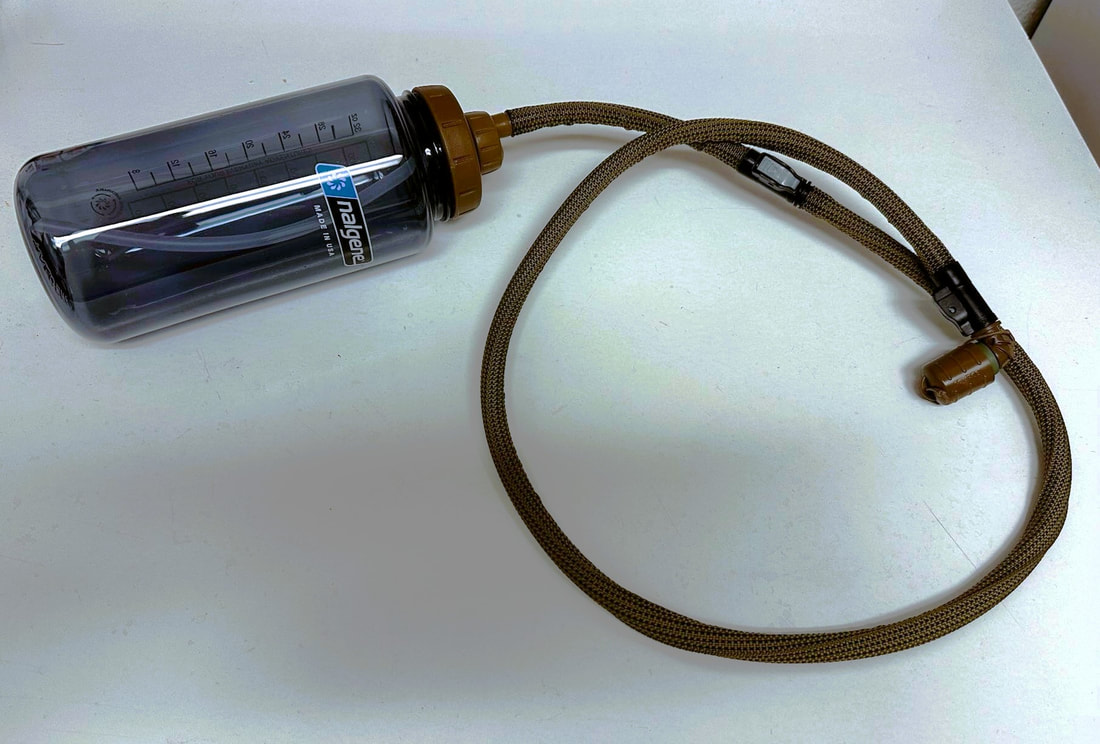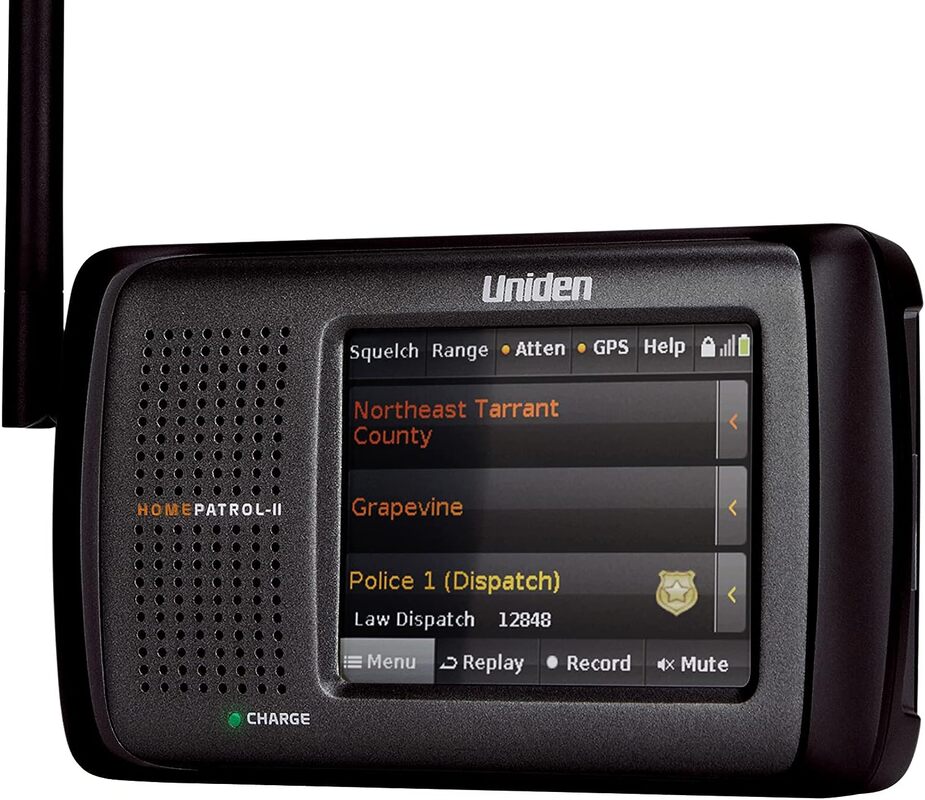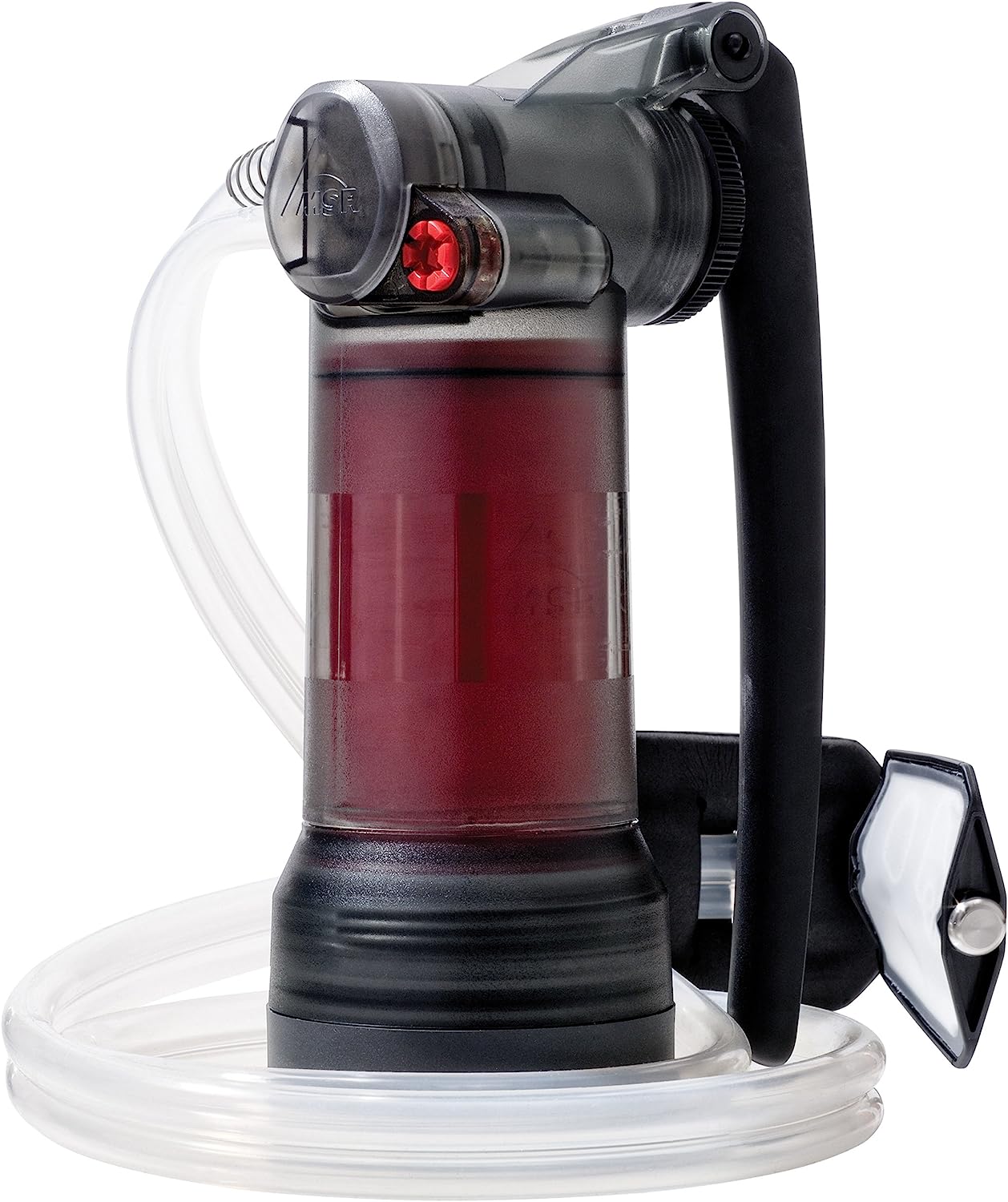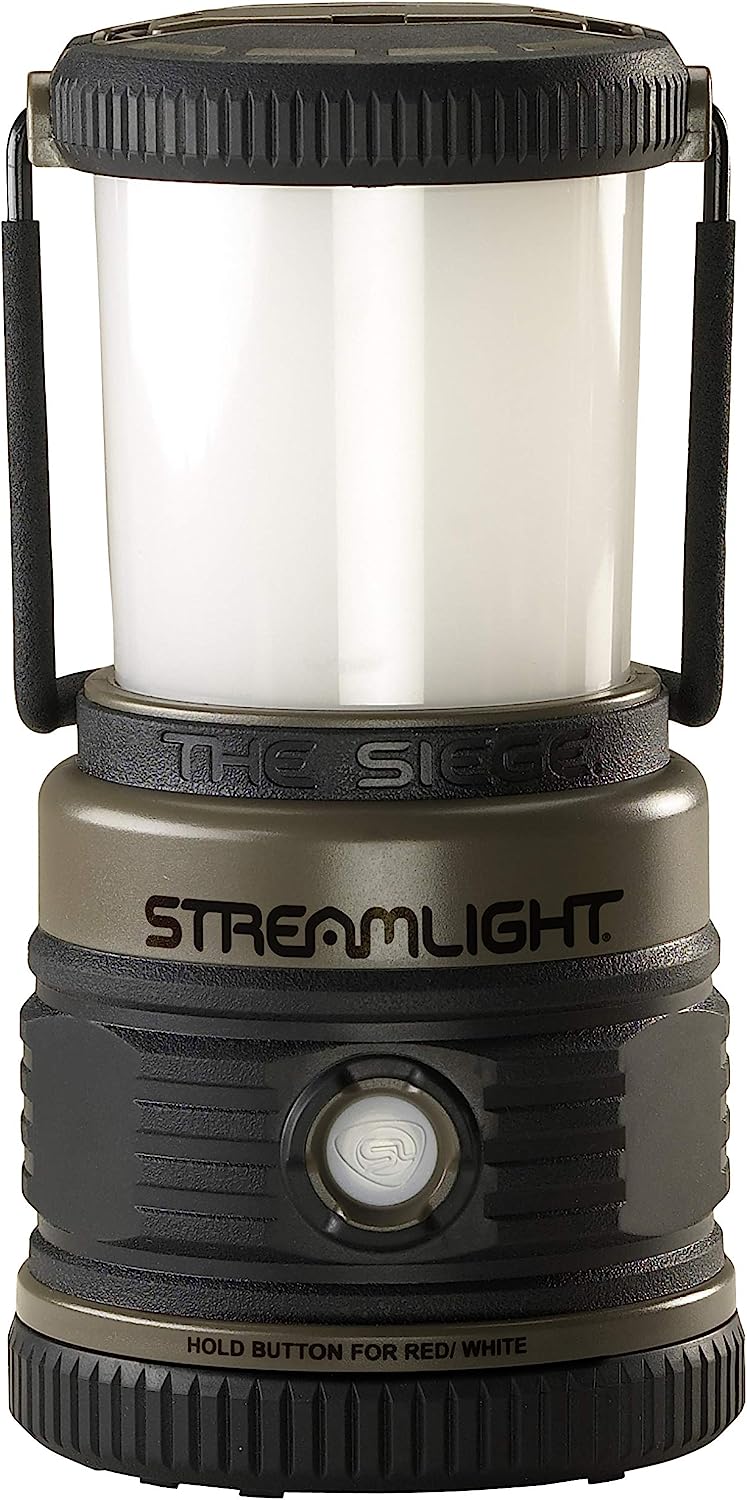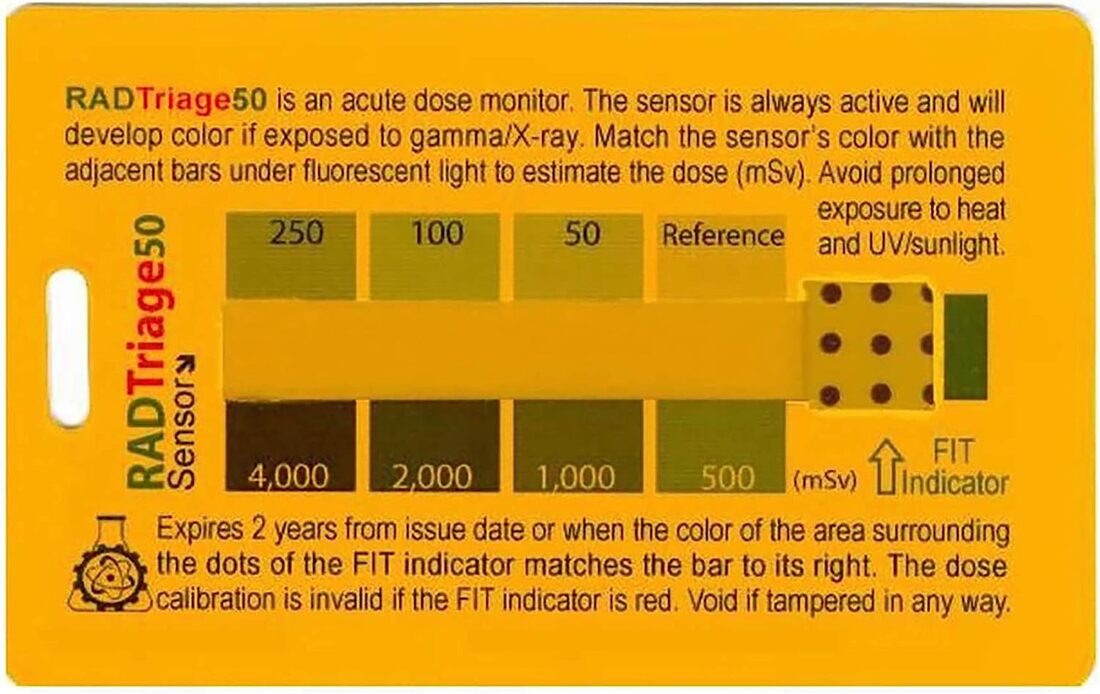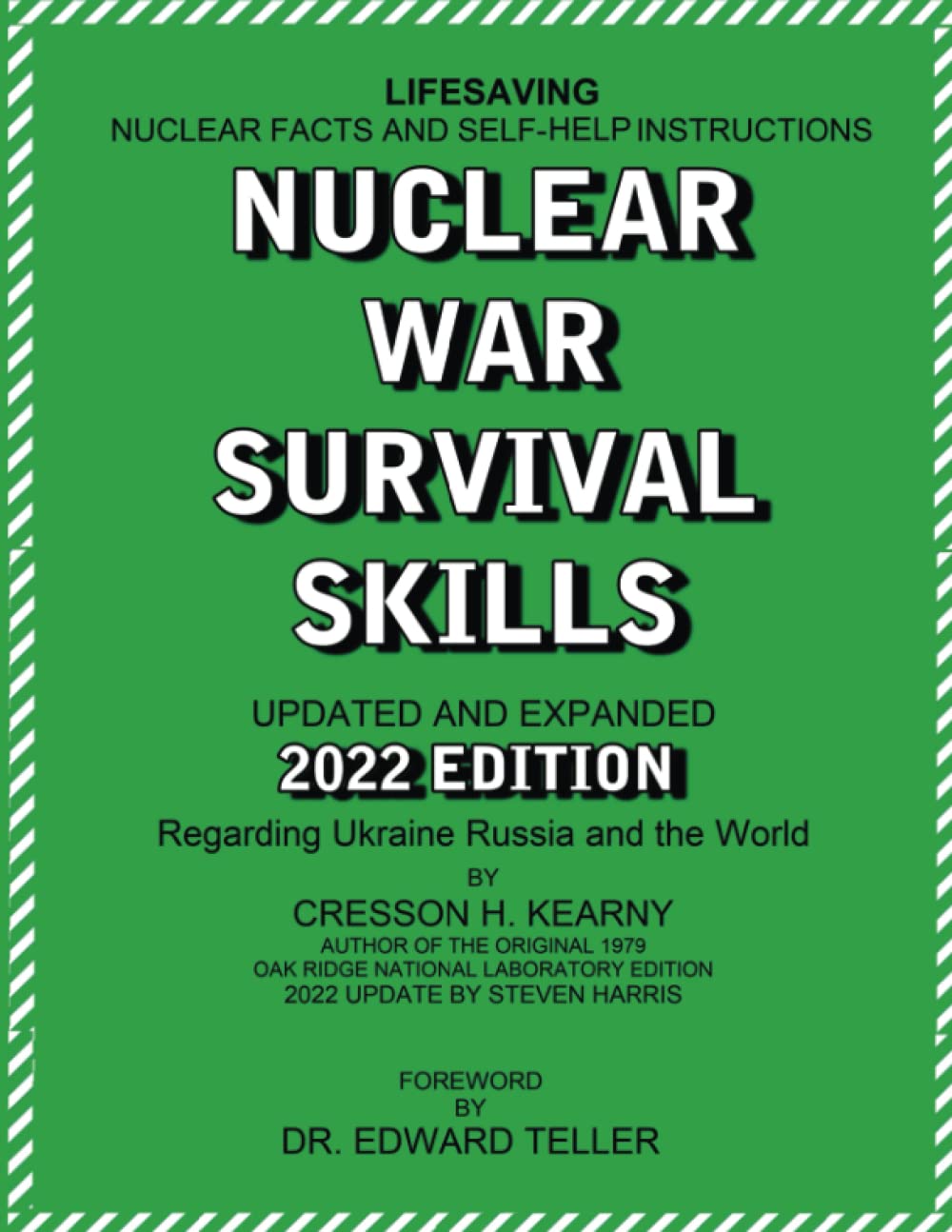 Author's note: You're getting this in a blog format while I struggle with creating a YouTube video. Let's just say there is a reason I've chosen to write books. I will express frustration at this point at how videos seem to have supplanted reading for learning. The video you're going to get is basically this same post but in a more stream of consciousness format. Everything you will learn in the video you can learn here; the video will basically be a dude reading/talking with the included images. That should speak for itself. Let’s face it, two-way radio is an intimidating subject and many of the videos, websites, and guides out there are more enthusiastic than they are helpful. The truth is that short-range radio really isn’t that complicated. Using a radio is as simple as keying the mic and speaking. Anyone who can program a VCR, hook up a TV, and use Microsoft Excel can hack anything up to a ham technician’s license generally by just winging it.
The hang-ups come when scads of technical details are thrown at the viewer. Did you refuse to learn how to drive a car because you don’t know how a carburetor works? This video will serve as a very basic and brief introduction to what two-way radio has to offer preppers, the average citizen who is interested in alternative communications should the telecom grid go down, and neighborhood defenders. The material has been adapted from my short book Basic SHTF Radio, available on Amazon. My advice here is intended to answer many of the questions of those who have no experience with two-way radio. If you’re not aware of who I am, I am a post-apocalyptic author and veteran of the Ventura County, California, Sheriff’s Office. I’m no expert or anything special, nor would I consider myself anything more than a knowledgeable novice at ham radio, but I have picked up a few basics to share with you. This is not a guide on how to use a particular piece of equipment, a primer for getting a ham radio license, or a detailed explanation of physics. Hopefully after this video you will come away with a better understanding of what the realistic capabilities are for an average person who just needs a secondary means of communication. All of the radio types and bands we will cover are in a 2-30 mile range. Depending on terrain that may be shorter or greater with the right equipment or conditions. In a relatively flat, open suburban or rural area, 5-10 miles for a vehicle mounted radio or 1-5 miles for a handheld, portable radio is realistic. While some basic radio and electromagnetism science and theory will be discussed, this video is going to focus on practical matters. I will start with what your options are before getting into the technical bits, so if there is something you don’t understand, I’ll circle back to it. Unlicensed and minimally licensed radio Radio frequencies within a certain range are set aside for different purposes and groups; these are called bands. While they have definite frequencies allocated, it’s easier to refer to the different bands by their purpose, such as CB radio, or by the wavelength such as 70 centimeter, which is a ham UHF band. In the unlicensed and minimally licensed radio category, you have GMRS, FRS, MURS, and CB radio. It’s important to note that while GMRS, FRS, and MURS frequencies can be transmitted on by a Baofeng ham radio, it’s technically illegal to do so, although no one will mind when the world ends. GMRS stands for General Mobile Radio Service. They are intended for family communications, they are popular with off-roaders, and often used without a license (illegally) by anyone needing a short-range radio. The license is $35, requires no test, and the online application is approved in 1-2 days. The license is good for 10 years and practically any close relative can use your license. GMRS is perfect for families or spouses that have no interest in a ham license. I have not heard of the FCC prosecuting unlicensed GMRS users or people for failing to properly use a call sign. This is a poor-man’s UHF ham analogue, but lots of people are using few channels, so you have fewer options than ham radio. Portable radios are usually 5 watts, which will give you 1-3 miles’ range in town without connecting to a rooftop antenna. 50 watt units (usually in vehicles or at home) and an external antenna could cover up to 15 miles depending on the terrain. If the cell network is down, my suggestion is to put a mobile GMRS 50 watt mobile radio in each vehicle, plus a 50 watt radio base station at home. If each car in the family has a radio with a suitable antenna mounted on the roof of the car, talking to a 50 watt station at home with a rooftop antenna (they sell 6ft tall poles that are unobtrusive) would be a breeze across a relatively flat suburban city. Each family member could also have a portable radio (walkie-talkie) with them. There are 22 frequencies with seven of them being allocated for repeater use. These frequencies are shared with FRS and both services can communicate with each other legally. Open, or public GMRS repeaters are operated by clubs and enthusiasts in many places. Repeater frequencies are noted as essentially a second channel with a suffix of R, i.e. 22R. However GMRS repeaters are less common than those on the licensed amateur bands. GMRS is second to having a ham technician’s license as its capabilities are very similar to 70cm ham UHF radio. They’re in the same part of the spectrum. The key to making the most out of GMRS is getting good quality radios. My family and my group use Woxun KG-805G portable radios. Using the downloadable software a custom band plan, within the GMRS frequency range, can be programmed. We’ve all replaced the short “rubber ducky” antenna with either 19” Nagoya whips or flexible folding antennas, which is the most important part of getting better range and reception. FRS is the Family Radio Service. They do not require a license and share the same UHF frequencies with GMRS. FRS and GMRS users can legally talk to each other, which is great because you can give the kids cheap FRS radios while the grown-ups can use GMRS and still stay in touch. That is as long as no one wanders too far apart. FRS radios are more limited in wattage, or transmitting power, and thus range than GMRS. Where as GMRS will let you talk across town, FRS is good within the immediate neighborhood. The antennas are not intended to be replaced and the channels can’t be reprogrammed. An unexpected advantage of FRS radios is their ubiquity. You and your neighbors probably have some of these radios at home already. They are commonly available in all sorts of stores. This means that unprepared people might suddenly discover they have a communications capability they didn’t know about. Their low price point enables you to buy a blister pack cheaply and put it away for contingencies, such as passing them out to a neighborhood watch. MURS is the Multi-Use Radio Service. It virtually is the VHF version of CB radio; no license is required. These can be used for personal and business use. Power is limited to 2 watts and there are only five frequencies versus 22 for GMRS or FRS. Range in most urban conditions is probably 1 mile at best. CB radio or Citizen’s Band is the old American communication standby for truckers and the Brady Bunch alike. It has largely fallen out of popularity. At the fuzzy border between High Frequency (think shortwave) and VHF/FM radio, CB can have the greatest range of all the options in this category. It can work well in hilly terrain due to the nature of the radio waves for its portion of the spectrum. Maximum legal wattage is 4 watts, which won’t reach far, but if you buy illegal amplifiers, you can increase power dramatically to reach across whole counties, depending on the terrain. Under the right conditions and with the right equipment, a CB radio base station could reach out around 30 miles or so, giving you medium range communications without a repeater. I have not heard of anyone getting in trouble for using illegal amplifiers and such has been a common practice since at least the ‘70s. For medium range communications, this is probably as close as you are going to get on the non-ham side. I personally wouldn’t use a CB as a primary vehicle radio because we have better options now, though the ubiquity of CB and its 40 channels do make it a useful tool and a good secondary vehicle radio. A CB radio base station with a good antenna mounted up high and a very powerful amplifier would be best as a home base radio, such as two distant houses calling each other. Two homes using such a setup may be able to communicate up to 30 miles over hilly (not mountainous) terrain where VHF/UHF radio couldn’t. Note that the range will be highly variable in the real world and dependent on your equipment. Licensed radio, the Amateur Radio Service (ham) “Ham” radio is properly known as the Amateur Radio Service and is licensed by the FCC. If you would like greater flexibility and the benefits of better radios and frequency choices than the unlicensed options above, pursue your amateur operator’s license. Ham radio is a big world that covers many different bands and a huge variety of capabilities from short and medium range local communications we just discussed to truly worldwide reach. The options we will cover here are the basic ones that just about anyone can access. For most people, being able to talk short range is enough however the ham radio hobby can take you to many interesting places with capabilities you might not think possible. But let’s keep it basic for now. To obtain an amateur operator license you must pass a test and pay a $35 application fee. Morse code is not required any longer. The tests are put on by many ham radio organizations around the country on a regular basis. There is one near you, wherever you live. If you just want the license, studying to the test is enough to pass. The question pool is public domain and there are many preparation websites you can take practice tests on. The big secret is that electrical knowledge and radio theory is not necessary if you cram. I say this because too many people are put off by the misunderstanding that you have to be some sort of electronics or physics whizz. Nevertheless, I cannot recommend enough that in addition to memorizing the answers, you should at least read an introductory ham radio book or study guide. Personally, I started with “Ham Radio for Dummies” and researched test questions I didn’t understand to learn more. Ham radio is divided into three license grades: Technician, General, and Amateur Extra. Technician is the easiest level to achieve and gives you access to VHF and UHF bands. If you just want to talk legally on your Baofeng, Technician is it. The main advantage of ham over just using GMRS is that ham radios allow you more power, more features in the radio, additional bands, and better ability to attach peripherals like microphones, antennas, and accessories. Why get a ham license? Yes, we know during SHTF many will just transmit without a license. I partially agree, and I have a license. I personally don’t want to be broadcasting my call sign for the bad guys to generate signals intelligence (or SIGINT). Obtaining a ham license is a positive because:
If you don’t get a license, there are always the unlicensed options but be aware that the frequencies will probably be clogged with traffic from other unlicensed users. Ham radio gives you more frequencies, greater capabilities, and a more professional experience. There is also the possibility that in a state of semi-collapse or anarcho-tyranny, where the government is still capable of law enforcement, that you will need to still play by the rules. As of third-quarter 2022, we are in the early stages of this gray zone of an anarcho-tyrannical collapse. There may be many instances where 2020-like riots erupt and you need to communicate with other hams. Barring a “mayday” type call you will need a license for anyone to respond to you. Radio band types The radio spectrum is separated into different divisions based on the properties of the radio waves within that division. These divisions are known as bands. Everyone is familiar with different broadcast radio bands; AM, FM, and shortwave. AM radio and shortwave are both in the HF or High Frequency range. Despite being at the low end of the spectrum, when radio was brand new this was the high end of radio waves. FM is even higher in the VHF, or Very High Frequency, range. Without worrying about the differences in the signal modulation, you can see that what we’re talking about are frequency ranges. AM and shortwave radio are often scratchy and low-fidelity. At night, they are susceptible to atmospheric fading and interference. How often has an AM talk radio station turned to static because you drove underneath high-tension power lines, a bridge, or pulled into a garage? This is because AM radio waves have a much longer physical wavelength than FM radio. Wavelengths are measured in meters, which is where names like 2m for the most popular ham VHF band comes from. Frequency is measured in Hertz, or cycles per second. Though an Elmer somewhere is screaming right now at my gross oversimplifications, think of wavelength as a description of a region and frequency as the address. A wavelength is the distance between the peaks of a set of waves; in the case of ocean waves it is from crest to crest. Electromagnetic waves behave the same way. As the frequency on the dial goes up, the wavelength gets smaller, and the properties of the radio waves change. For instance, lower frequencies tend to be less prone to obstructions like terrain. In fact, HF, which again is High Frequency, radio waves will bounce and skip between the earth and the atmosphere which is what gives them worldwide range. For example, under the right conditions a 50,000 watt clear channel AM radio station can be heard hundreds of miles across the country. HF ranges from AM/shortwave radio to the CB radio range. Usually 26.965-27.405 MHz for CB (unlicensed) and 28.000-29.700 MHz for the 10m amateur band. CB radio is also considered as near FM since it is right at the blurry edge of HF and VHF, sharing characteristics of both. Except for limited frequency ranges, at a least General amateur license is required to use HF bands. If you want to talk hundreds or thousands of miles it is done in this part of the spectrum. However, doing it successfully requires knowledge about the electronics themselves, radio theory, and antennas. It is not a plug and play kind of thing. A dedicated individual who wants to learn about long-range radio communication certainly can become proficient if they are willing to invest the time which realistically involves getting licensed. What anyone can do with HF radio, besides CB, is listen. A shortwave receiver that is capable of tuning into amateur or even military frequencies is an intelligence tool. In the US, shortwave radio is uncommon or even unheard of. We don’t have the BBC World Service (except maybe on the East Coast, depending on propagation) and our radio listening is practically all just AM/FM. As long as you bought a shortwave radio that isn’t only tuned to catch broadcast stations, you can listen to amateur, military, aircraft, and maritime HF traffic. The two major bands you’ll most likely be dealing with as a prepared citizen are UHF and VHF. These are for short range communication; five miles give or take. UHF stands for Ultra High Frequency. Usually consumer radios are in the 400 MHz range, like FRS or GMRS. For hams, this includes the very popular 70cm AKA 440 MHz band; a Technician-level amateur operator license is required at the minimum to legally use 70cm. VHF stands for Very High Frequency, usually in the 30-200 MHz range for civilian radios. This is most common for the 2m band (144-148 MHz) ham radios, like the ever popular Baofeng radio. The 2m band requires at least a Technician-level amateur operator license at minimum. MURS, or the Multi-Use Radio Service, is also VHF. VHF and UHF are line of sight radios, meaning they cannot be used to talk over obstacles like mountains. Propagation, how far the radio waves will go, of both will suffer if you have terrain or large buildings in between users. If you are on top of a high hill, you may be able to talk out to the often advertised range of 25+ miles if someone is equally as high as you are, you both have good antennas, and are using high output wattage. Range is never what is advertised on the packaging except in those one-off situations. The long ranges for these radios are predicated on ideal conditions, such as from one mountain peak to another. Higher wattage radios and larger antennas help, but for these radios how high you are and the fewer the obstacles in between, the better. In the city expect 1-2 miles on the ground between walkie-talkies and up to five miles if you have some altitude. Rooftop antennas (home and vehicle) and more powerful transmitters can extend range in urban areas. Realistically, there is no practical difference between the two bands. UHF radio is better for indoor usage and in urban areas because its radio waves penetrate buildings better, at least for very close distances such as across floors. For example, businesses or fire departments use them to communicate in large buildings. UHF can be blocked by say a city skyline, but if you are in a building or need to talk amongst them, UHF for short distances is at the advantage. UHF waves like to “bounce around” and this is what gives them their ability to find their way to an antenna. Manhattanites might prefer UHF over VHF but it’s not magic. VHF tends to be better than UHF outdoors where obstructions are limited and it has a better ability to penetrate trees and vegetation cover. VHF does have the drawback of not being able to “bounce” over terrain, but it will still work although some dead zones may exist. VHF could be understood as a better rural band while UHF is a better urban one, though the differences are too slight to matter at short range. I can tell you that in my experience, my sheriff’s department is VHF while a local suburban PD is UHF. I need to get into this right now If you need to get your comms situation squared away right now, this is what I suggest. Buy one portable, handheld GMRS radio per adult in your family along with one replacement antenna each. Buy one programming cable as well. For your younger kids, around the house/property, or for neighbors, buy a blister pack of FRS radios. To use a portable radio in the car, buy an adaptor that screws into the antenna plug and enough cable to attach to a magnetic mount antenna for your car. Make sure the mag mount antenna is suitable for UHF. Put the antenna in the center of your car roof and run the wire between the weatherstripping and the door frame. Check the connector types before buying. If you want to buy a Baofeng or other ham radio right now, go ahead and do it. You can always put it on the shelf while you study. You will also need a better antenna for your Baofeng, a programming cable, perhaps a shoulder mic, and a larger battery pack. What radio should I buy? I’m not going to make much in the way of specific radio recommendations. Find what works for you from a functionality and price standpoint. Personally, for handheld transceivers I use Baofengs and Anytones for VHF/UHF ham traffic and Woxun KG-805G for GMRS. Baofengs can access frequencies outside their approved bands (usually 2m/70cm). Even new radios that supposedly had this ability disabled can be “jailbroken” to allow it. If you are going to use a Baofeng for GMRS/FRS, remember that it is technically illegal, and the FCC as well as white knight hams can tell by signal analysis that you are not using a proper GMRS radio. The FCC wants people only using approved equipment for each service and band. In conclusion, this is simply a very brief guide to getting started with radio. I hope it has shed some light on the subject. Ease yourself into the technical aspects of radio and don’t worry about having to become an electrical engineer. If you want to learn more, connect with your local ham radio club or consider taking a course from some very knowledgeable trainers out there. NC Scout, AKA Brushbeater runs some excellent and well-reviewed courses that cover practical radio operating techniques for contested field environments. If you’re looking for a more tactically oriented course in particular Scout is the man for that. Check out his course descriptions and training calendar at brushbeater.org. See also his "The Guerrilla's Guide To Tamzn.to/3UMylSMhe Baofeng Radio." If you liked this video and want to support my work, if you want to learn more ways to survive civil war, domestic unrest, or a nuclear war, or if you are looking for some post-apocalyptic fiction, please buy one of my books. They are available on Amazon.com. Comments are closed.
|
Author Don ShiftDon Shift is a veteran of the Ventura County Sheriff's Office and avid fan of post-apocalyptic literature and film who has pushed a black and white for a mile or two. He is a student of disasters, history, and current events. Archives
May 2024
Categories
All
As an Amazon Associate I earn from qualifying purchases.
|
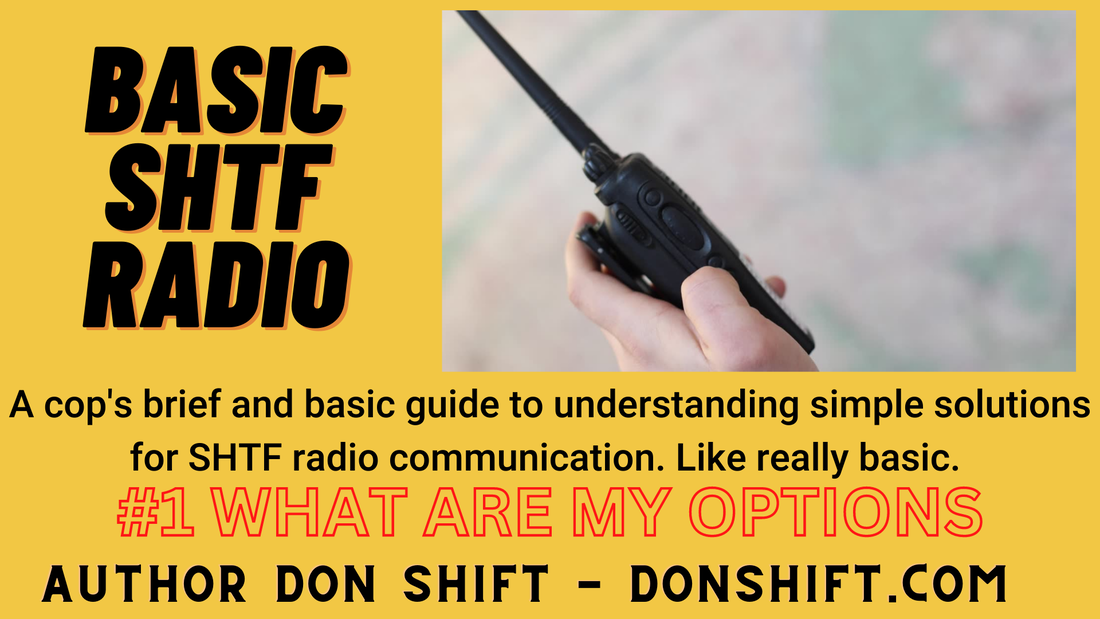
 RSS Feed
RSS Feed
